Church Building Designs, Religious Interiors, Architects, Photos, News, Images
Church Building Design : Architecture
The Gospel of Green – Spiritual Architecture
11 Sep 2009
Church Buildings Design
By Trevor Tucker
I’m sitting up in the fifteenth row of the balcony. My wife and four kids are with me, as are my parents. We’re watching the happenings from down below on two large multi-media screens. Mist, generated by a smoke machine, is turning all kinds of vibrant colours in sequence under the ceiling mounted pot lights. Giant evergreens tower on either side of the massive stage. A new eco hybrid car has been driven inside for a dramatic presentation. There are about 2000 people here of all ages and colours. “Jesus is the reason for the season”, says the smartly-suited man at the front.
Yes, this is church on Christmas Eve, here in Ottawa, Canada. This “parish” that my parents are a part of is the local version of the American mega-church, and I’m sitting here, between carols, musing about the smorgasbord of signifiers in this massive auditorium and their remarkable evolution. I’m reading the place, while I’m being told the Christmas story.
And what better place to consider symbolism than a church and on a night so traditionally filled with pageantry as Christmas Eve?
In this church the images are all digital. Take away the electricity and there is no story left. No pious faces on stained glass. No “In memory of” on pew plaques or along the walls to tie this place to its history. No pictures and no text, anywhere. Apart from the small stained glass window that sits in the foyer, a leftover from the previous edition of this building, the edifice floats outside of time.
And what of the building’s purpose? There is no podium or pulpit. There are microphones, a grand piano and stacking chairs in rows, so you can assume there’s a choir. One’s eyes are indeed directed to the front, but the focal point is almost too big to focus on. Again, without electricity, one wouldn’t know where to look. My kids certainly wouldn’t.
There is very little that distinguishes this place as a church. Cover up the large cross at the front, and one could hold any sort of convention here without giving any offence.
And as a space it works great. This is the ideal flexible space, for crowds of over a thousand, that is. It is fully accessible for physically disabled. The colours are subdued. Ample foyer space, good washrooms, a large information table, and a fantastic sound system.
It’s as though the whole purpose depends on the people that are here. On this night the presentation is electrifying and evangelical, no question there. The people are clapping their hands; a few are even raising them in joyful worship. The preacher is clear on what is his message. When they leave, that message leaves with them.
We can no longer judge a building by its cover. It seems a universal fact of modern architecture. If there were no text signage, could we find a bank, a hospital, a school, a government office in this modern age? It is to this lack of idiosyncrasies that I am drawn when it comes to thinking about sustainable architecture-architecture that will still be standing in a hundred years.
As we scan the pages of this site and others, and see the latest public-space statements erected by the latest starchitect, many of them share this odd “mother ship” look, as if they’ve just landed, as opposed to having grown out of their context. They move people through quickly and easily. The expensive mechanical systems are efficient. The materials are recycled. Maybe they take advantage of passive solar. And so these are dubbed sustainable. But where is the visual element of sustainable architecture? When does a building suggest permanence, not only on its ground, but in our psyche?
Church or not, architecture illustrates, in fine detail, our beliefs. And I think, so far, much of our would-be green architecture belies a subtext that is quite different than our PR. Our buildings say more about mechanization, about the power and potential of industrialism, about inventiveness even, than they do about the natural environment.
I wonder if we truly want our grandkids to look at our buildings and know that we have embraced the “back to nature” story.
Do we trust our symbols to transcend time? Or are we afraid to put an idiosyncratic stamp on something because we don’t trust our experience? If our buildings are not rooted in time, what does that say about us?
If we truly believe that this green shift is universal, and an essential part of the human story, then our buildings should tell that story in vibrant flourishes, having the confidence that our ancestors will share that story.
Think about it: the stuff we keep is actually quite unique, and not always flexible. It’s certainly not been maintained because of its functionality. The doorways are short, the floors are sloped, and it impedes traffic flow. But there’s something about the building that actually gives us a sense of who we are. We feel safe here. In the long run, we will keep buildings that are strong and that we like to look at, and that resonate with the human experience, no matter what the mechanical systems are.
The Cathedral will still be standing long after the “megachurch” has been demolished. Which one is sustainable?
Comments on this Church Building Design article are welcome.
Trevor Tucker
Editor and sessional professor of English literature at the University of Ottawa
ttucker at rogers.com
Sustainable Design : article by Trevor Tucker. 15 Sep 2009
Sustainable Architecture Design : article by Trevor Tucker. 18 Aug 2009
Church Architectural Design
This page contains a selection of Religious Architecture, with links to individual project pages. We’ve selected what we feel are the key church buildings around the world.
Selection of Key Church Buildings featured on this site, alphabetical:
Aula Ivana Pavla II, Rijeka, Croatia
randic-turato architects

photograph from architect
Aula Ivana Pavla II – contemporary Croatian Church Building Design
Cathedral of Christ the Light, USA
Skidmore, Owings & Merrill
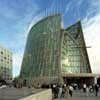
picture : Timothy Hursley
Cathedral of Christ the Light
Church of the Holy Cross, Denmark
KHR arkitekter
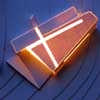
image from architect
Church of the Holy Cross – contemporary Danish Church Building Design
Crystal Cathedral, Los Angeles, USA
Philip Johnson with John Burgee
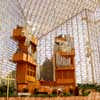
photograph © Andrew McRae
Los Angeles Cathedral
Iglesia Villa Maria, Chile
Enrique Browne Arquitectos
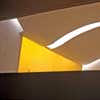
photograph : Guy Wenborne
Casablanca Chapel
Liverpool Catholic Cathedral, England
Frederick Gibberd architect

photo © Adrian Welch
Liverpool Catholic Cathedral
St Paul’s Cathedral, City of London
Sir Christopher Wren
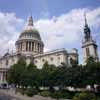
photo © Adrian Welch
St Paul’s Cathedral
Sagrada Familia, Barcelona, Spain
Antoni Gaudi, Architect

photograph © Adrian Welch
Sagrada Familia Barcelona
More Religious Architecture projects online soon
St Martin-in-the-Fields Church
Buildings / photos for the Contemporary Church Building Design – New Religious Architecture page welcome

